Facing a Road Trip
Excitement was building to pitch level to attend The Art of the Portrait, the PSA’s annual spring conference spanning four days in D.C. A buffet line of world famous portraitists would impart their skills, original paintings would be offered in an affordable range, portrait painters would nearly finish a painting of a live model, and different-styles would be demonstrated along with lively teachers sharing–well, for a portrait artist–it’s like dying and going to heaven. And yes, there’s even a Sunday inspirational hour, thanks to Gordon Wetmore who began this before he died and left it as his legacy.
For me, an additional joy was watching the demonstration given by Mary Whyte, a watercolor portrait artist, since I work in both oil and watercolor media. We left early Thursday morning with a picnic lunch. The trip was easy, and we pulled off at the Virginia state line’s welcome center.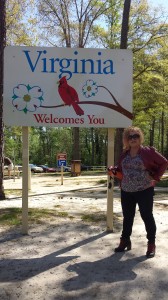 We pulled out gourmet sandwiches on German rye and sourdough bread fixed by my travel companion and husband, Sandy. Boiled eggs, pickles, and Scottish shortbread finished it off. We were wrapping everything up when I heard someone yell my name. Now Smithfield, yes, but the Virginia state line? Turns out this was a Classmate and she was antiquing to Pennsylvania with her husband. An interlude of surprise.
We pulled out gourmet sandwiches on German rye and sourdough bread fixed by my travel companion and husband, Sandy. Boiled eggs, pickles, and Scottish shortbread finished it off. We were wrapping everything up when I heard someone yell my name. Now Smithfield, yes, but the Virginia state line? Turns out this was a Classmate and she was antiquing to Pennsylvania with her husband. An interlude of surprise.
At the Hyatt Regency, we were checked in and escorted to fourth floor, conscious of needing all my energy for the exciting but grueling days ahead. I chilled a little, then attended the inaugural event of each year, the Paint-Off, where fifteen artists surrounded five models and raced to finish a painting of one of them. The crowd gathered in seated units in front of a model plus three artists, and watched. Or we migrated to another station and watched another three artists perform. In transit, we might move closer to take pictures. Only once did a lady near me cry, “Down in front!” to a man who stood over 6′ who blocked the view in front of the rest of us. What you learn and see in this marathon is incredible. Like I told a volunteer at the end, you have to afford this conference–it’s worth five years’ worth of the very best courses. In the supplies line, we were exchanging impressions of museums in Holland with a participant who had come from there. I talked to Californians, Illinoisans, several from the South, New Jersey, Australia, and the young man I had sat next to at last year’s banquet from Estonia who won another prize this year.
When time was called on the Paint-Off, the paintings were spirited off to a room where a silent auction extended throughout the conference, followed by a brief skirmish at the end so the highest bidder could take them home. All during the regularly scheduled programming, the art supply vendors sold top-line products, and in my first break, I located a new brush I’d seen on line, the “comber,” which gives fantastic hair lines. I got one in three different sizes. Also, art books were sold in a separate line–books you really can’t get elsewhere, sometimes. Once you’d paid and picked up your purchase, you might drop by to see a sculptor or painter in the middle of a demonstration. Lunchtime was not for lunch–I never eat when I go–it was for standing in line to get your portfolio critiqued, or laying out your portfolio in a dedicated room to garner comments. Or for lining up behind authors to get them to sign their book you just bought.
Or you could visit the sanctuary of the top 21 Portrait Finalists, study them, photograph them, pick your favorite, and vote. This year the best prize and the people’s choice was the same artist. Besides these features, a drawing was held for Hughes Easel, and smaller merchandise awards were drawn by the individual vendors. If you could possibly squeeze it in, you got to meet your state ambassador, get your photo taken as an alumni, and if lucky, drink a cup of coffee or eat a banana upstairs or drink a coffee outside on the street at Panerra Bread which looked a part of the hotel, but wasn’t.
Friday night’s special event was the sale of 6 x 9 originals done by former prize winners and PSA faculty. I got my choice, by one of my very favorite artists, Bart Lindstrom, although I didn’t realize at the time I had his. I had taken his workshops last year and learned a lot from him. On Saturday night, the gala banquet featured yummy food, a noted guest speaker, networking, and the presentation of the awards to thunderous applause. I’m already friends with several fellow painters from our table.
We attended the scheduled top artists’ demo sessions as they painted models from life using the atelier sight-size method. Half the screen we saw was filled with the art in progress, the other half, the model’s face in the same position. As the artist moved and painted, sometimes explaining what they did, we watched. Questions, questions: why was that yellow, why that pink? And bit by bit as they progressed, we saw the subject evolve before our eyes. In one presentation, we watched two artists at the same time. By the finish, the likenesses were there, but the products were entirely different. We watched Mary Whyte whose oversized watercolor work recently showed in a SC Museum and who challenged me last year to take the plunge into larger paintings, paint her personal model.
Thanks to Mary, I now have 10 sheets of 300-pound 40 x 60 watercolor paper. My subjects and themes are similar to hers as well, the working person, and I do have an invitation to pursue a proposed exhibit three years out which I now can begin to start projecting. Of course after seeing demonstrations galore, you were just itching to do one yourself, and the artist in you was screaming, I want to try it. So of course when they offered a participatory drawing session from a model, I attended it with my clipboard, grey-blue paper, pencils, and charcoals, and was happy with what I turned out in an hour and a half.
We watched a two and a half hour demonstration by renowned portrait artist Daniel Greene using his famous palette of colors, and saw the model before him emerge onto his canvas. We watched two artists race side by side to produce likenesses of a model, and in spite of their very different products, the end result was they both looked like the model.We listened to a panel of artists which included Raymond Kinstler tell about their experiences like his of painting notables like Kathryn Hepburn and other high-dollar clients. I took a special session with Virgil Elliott about archival properties of paints and solvents, and he showed us his charts of colors left in the sun for several years to demonstrate how lightfast certain ones were or weren’t so that we could make choices that would benefit our clients from our decisions, and merit our reputation for giving the best fine art has to offer. Jennifer Welty gave us tips based on setting up visits to her clients to photograph children in their best settings. She particularly liked spots where light streamed through windows. She, Virgil, and Paul Newton from Australia discussed the most enduring poses and how to enhance portraits with professional lighting. Jennifer showed us her travel case of equipment for on-the-site lighting. Paul set up his lighting with a class model and showed us how he used reflectors. At the same time, other specialists were helping six other groups/subject areas.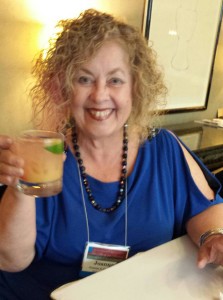
Absorbing all the information available in this event was like drinking water out of a fire hose, but I never tired from the exposure. My brain just shut down from overload at night. After the conference was over, I enjoyed studying excellent portraits in the National Portrait Gallery, a bus trip ordered up by PSA. The amazing way the wetness of the eye was caught was a standard at one point in the history of portrait painting, and the colors exceptional. But like all good things, one’s saturation even of this happens after 2-1/2 hours—you simply cannot absorb a fraction of what you see in one trip—and so we migrated to the garden café for a coffee and treat before heading back through the cherry trees a-bloom in Washington, D.C.
I kept up pretty darn well for an over-taxed, ADHD, dyslexic, readjusting my schedule every whipstitch and keeping up with my junk. That is until the very end, when I thought I had made a transfer to my husband that didn’t happen. My portfolio went missing. I bugged the lovely hotel staff and finally after an afternoon, night, and morning of not knowing, found out the PSA’s on-the-ball staff had loaded it with their equipment and taken it back with them. I had left it leaning on the back of a chair. I teased Christine Egnoski that I hoped they wouldn’t pay me not to come back next year. Because if I can, I surely will return for more next year in Atlanta. See more pictures on the trip and event @ http://www.pinterest.com/joartis/joining-top-portrait-artists-in-dc/
Learn more »

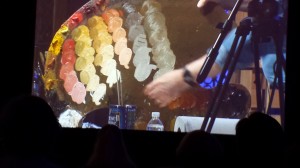
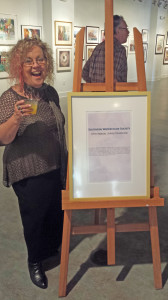
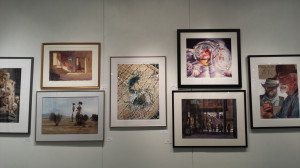

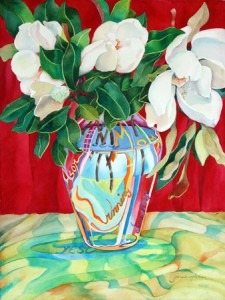

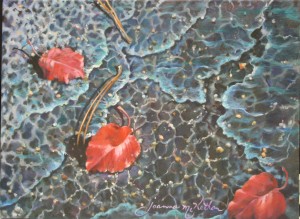



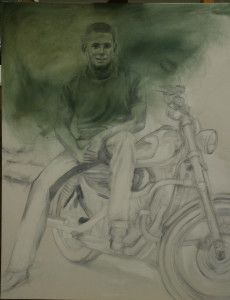
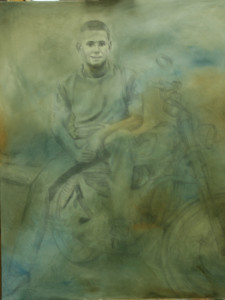
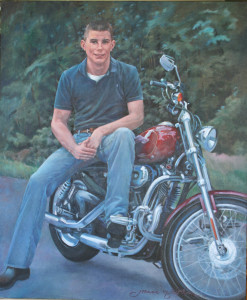

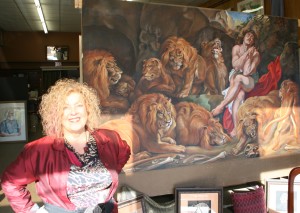
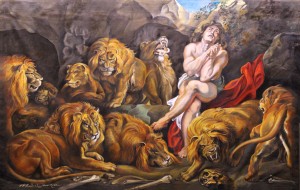
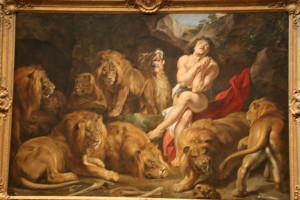
![541886_10151867873104694_1243631060_n[1]](https://joriginals.net/wp-content/uploads/2013/12/541886_10151867873104694_1243631060_n11-300x168.jpg)